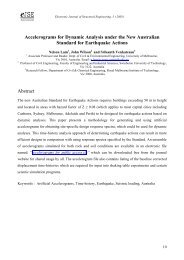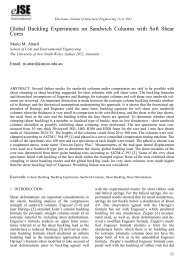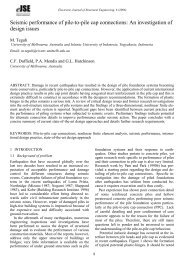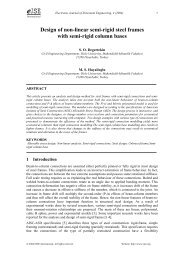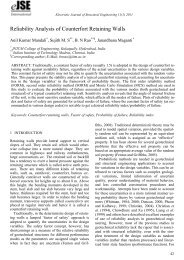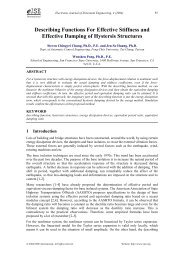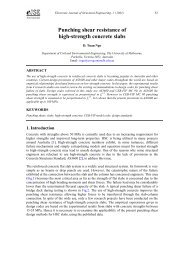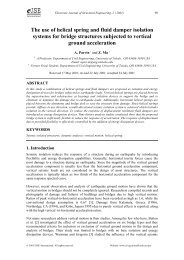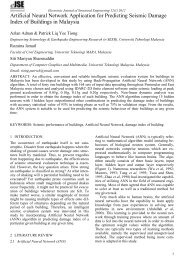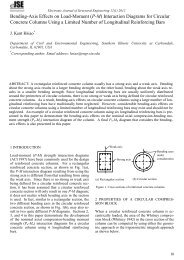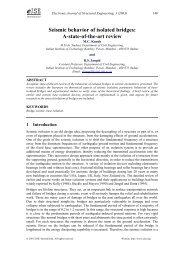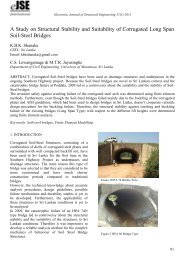You also want an ePaper? Increase the reach of your titles
YUMPU automatically turns print PDFs into web optimized ePapers that Google loves.
Note: In the ADRS format, lines of constant period show up as straight lines<br />
radiating from the origin.<br />
• There are four edit boxes associated with the Show Constant period Lines At check box.<br />
The numbers entered in these boxes are 0.5, 1, 1.5 and 2. These are the default periods<br />
for the lines of constant period. You can change any of these values by typing a new<br />
value in the appropriate edit box. The periods do not have to be input in order. If you<br />
leave a Period box blank, or enter a zero (0), then that line will not be plotted.<br />
19. In the Damping Parameters area note the following:<br />
• The Inherent + Additional Damping box defaults to 0.05. This value can be changed by<br />
typing a new value in the edit box.<br />
Note: To help you understand what value to input in the Inherent + Additional<br />
Damping box, refer to ATC-40 equation 8-8. The β 0 term in this equation is<br />
automatically included by the <strong>SAP2000</strong> analysis method. The 5% inherent viscous<br />
damping term can be specified in the Inherent/Additional Damping edit box as<br />
0.05. If there is additional viscous damping provided in the structure, perhaps by<br />
viscous dampers that are not specifically included in the model, then this damping<br />
should also be included in the Inherent/Additional Damping edit box. Thus if the<br />
damping inherent in the structure is assumed to be 5% of critical damping, and<br />
dampers which provide an additional 7% of critical damping are assumed to be<br />
added to the structure (although they are not actually in the model), then the<br />
value input in the Inherent/Additional Damping edit box should be 0.12, since<br />
0.05 + 0.07 = 0.12.<br />
If dampers modeled with NLLink elements are included in the model, then for the<br />
pushover analysis, the program treats them as linear elements. Their stiffness is<br />
based on the linear effective stiffness (KE) and the damping is based on the linear<br />
effective damping coefficient (CE). The program uses the linear effective<br />
damping coefficient for the damper, together with the effective period to calculate<br />
damping which is internally added to the specified Inherent/Additional Damping<br />
term.<br />
• There are four Structural Behavior Type options: A, B, C and User. Structural Behavior<br />
type B, which should be currently selected, is the default. Structural Behavior Types A,<br />
B and C, which define a kappa (κ) factor that reduces the assumed damping, are taken<br />
directly from ATC-40. The User option allows input of other values of kappa (κ).<br />
Note: Refer to ATC-40 Section 8.2.2.1.1 for a discussion of structural behavior types.<br />
The structural behavior type is used to specify a kappa (κ) factor (see Figure 8-15<br />
in ATC-40) that modifies (reduces) the calculated area of the hysteresis loops to<br />
account for assumed pinching of the loops.<br />
<strong>SAP2000</strong> <strong>Web</strong> <strong>Tutorial</strong> 1 117



